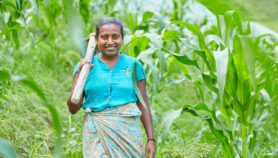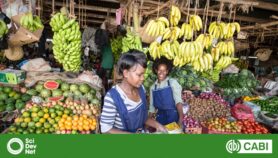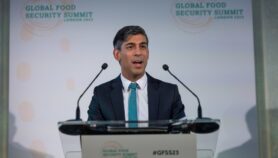Send to a friend
The details you provide on this page will not be used to send unsolicited email, and will not be sold to a 3rd party. See privacy policy.
Policymakers need better information about the regional impact of climate change on water supplies, and on ways of adapting to it.
For centuries, food production — and thus social development — has depended heavily on access to the water needed to grow crops or rear livestock. Having enough water is only part of the issue, however: it must also be available when and where it is most needed.
In the past few decades, the balance between water supplies and human need has come under increasing threat from growing populations, urbanisation and, most recently, climate change.
One of the biggest impacts of the build-up of greenhouse gases in the atmosphere is expected to be a significant increase in rainfall variability and in the frequency and intensity of extreme events, such as droughts and floods. Climate change is being widely blamed as a significant contributor to the devastating floods in Pakistan, for example, as well as recent mudslides in China and fires in Russia.
The likely increase in rainfall variability could have equally devastating, if less obvious, effects on food production and rural livelihoods. Even a short dry spell during the growing season in some areas of Africa, where farmers rely almost entirely on rainfall to water their crops, can devastate food supplies.
Unless national policymakers and local communities in these regions can adequately anticipate, prepare for and adapt to such shortages, the result could be starvation for millions.
Coping with variability
This week we put these issues under the spotlight in a series of articles that examine the links between climate change and water security, highlight the gaps in our knowledge, and provide advice to policymakers.
The task facing scientists and technologists is both to provide robust tools for predicting and planning for regional and local shortages, and to ensure that these tools are appropriate for the situations in which they must be used.
A background article summarises the key issues, including the different ways in which climate change is expected to affect water security, and describes the water management strategies — both technical and social — available to mitigate them.
A major obstacle to implementing such strategies in local communities of the developing world, according to climate scientist Mark New from University of Oxford, is the uncertainty with which we can predict changes at the regional or local level. The solution, he suggests, lies in ensuring that there is sufficient flexibility and adequate in-built options in water management projects to cope with major variations in water supply.
Richard Taylor, a hydrogeologist at University College London, echoes New’s concern over inaccurate predictions. He argues that current methods for assessing water scarcity in Africa, in particular, are not tailored to local realities, and he calls for a new measure that can better help policymakers plan for future changes.
Matthew McCartney, a hydrologist at the International Water Management Institute (IWMI) in Addis Ababa, Ethiopia, explains that the biggest challenge facing the world’s poorest people lies in developing their capacity to manage rainfall variability.
Water storage can help, he says, but only if it is customised to local contexts. He calls for greater research into evaluating the effectiveness of different water storage options.
David Molden from IWMI in Colombo, Sri Lanka, also highlights the potential benefits of appropriate water storage — but only as one of a much broader range of small-scale solutions that can be adapted to the needs of local farmers. These, he says, are key to improving water security and increasing agricultural productivity in the face of climate change.
An illustration of how this is being achieved in practice is provided by Aisling Irwin and Aditya Ghosh in a feature on the growth of ‘rain harvesting’. Irwin highlights a rooftop catchment programme in Sri Lanka, which has installed 35,000 systems since 1995, and examines the criteria for the success and failure of such projects.
Reliable information
Together, these articles highlight two crucial issues that must be addressed to equip the world’s poor with the tools needed to meet future challenges facing food production.
First, major efforts are needed to improve the regional accuracy of predictions about how climate change will affect water supplies. This is essential to build policymakers’ confidence in predictions at the local level, and convince them to take the often costly steps needed to adapt to the water shortages — or surpluses — that their communities may face.
Second, the technology needed to address these threats must be designed to take local conditions and capacities into account. Communities will only adopt new strategies if they are convinced that they will work, and if they have both the knowledge and the means to put these strategies into effect.
Good science communication is essential for both these tasks. The media clearly has a key role in interpreting the work of climate scientists into language that regional policymakers and local communities can understand, enabling them to see the relevance of the scientists’ conclusions.
Similarly, journalists and other science communicators also have an important role in providing both reliable information and informed comment, helping to empower local communities to take the technical, social and political action needed to minimise disruption to food production.
David Dickson
Director, SciDev.Net













